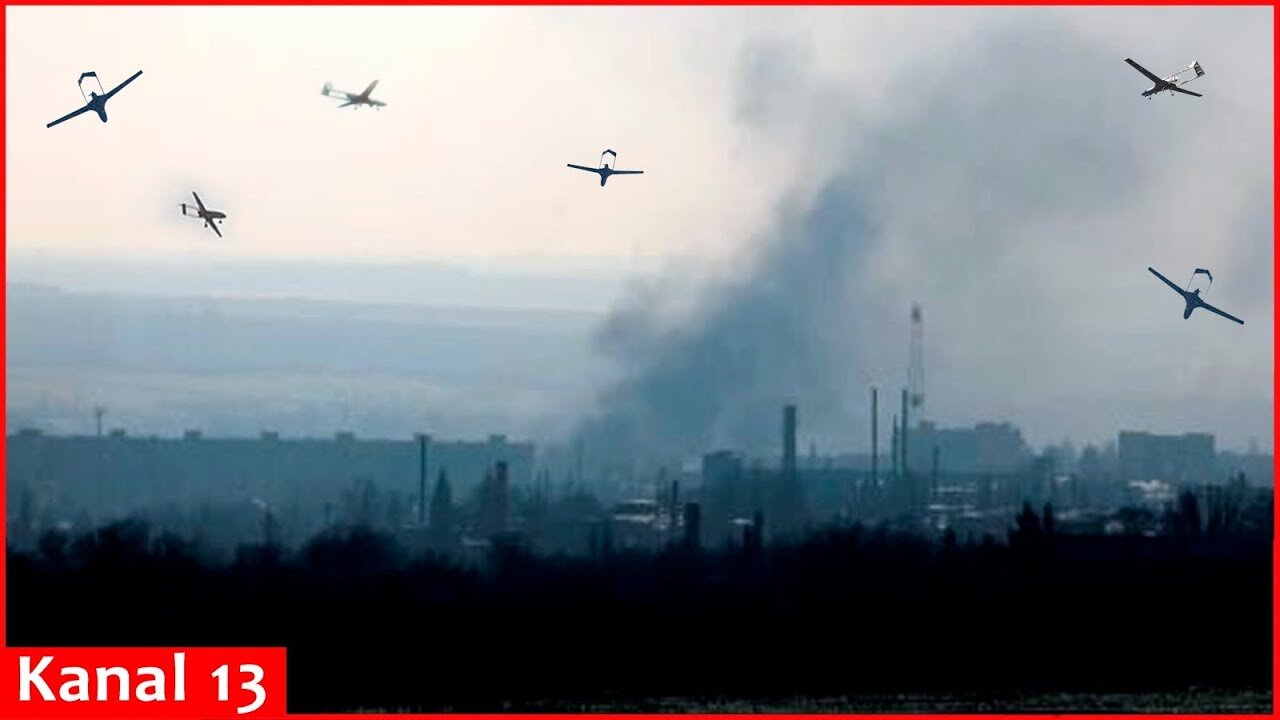Premium Only Content

Drones crowding Ukrainian skies turn gray areas into "death zones"
As the skies above the war zone in Ukraine are patrolled by countless drones hunting for any sign of movement, Ukrainian and Russian forces have little to no way to move across the battlefield without being spotted and killed. The Washington Post reported this.
The Ukrainian military noted that the growing number of small drones in Ukraine has turned the area on both sides of the line of contact, commonly referred to as the grey zone, into a "death zone". This means that those who dare to move day or night under the watchful eye of adversary drones are immediately killed.
Journalists reported that the cheap drones deployed in Ukraine have transformed modern warfare, and initially gave Ukrainian forces an advantage on the battlefield.
However, the Russians swiftly caught on and commenced large-scale production of their own drones.
Experts term the current stage of the war the "blitzkrieg drone warfare", and admit that it is a stalemate, as if any person is out in the open, they are immediately hunted.
"But the saturation of drones, many with thermal cameras that work at night, has also shrunk the space where troops can move safely without being spotted — leading to high casualties and, in recent months, largely preventing either side from making major breakthroughs", the Washington Post said.
Cheap drones deployed in Ukraine have transformed modern warfare — and initially gave Ukrainian troops an advantage on a battlefield where they are perpetually outnumbered and outgunned. “This is the evolution of our survival,” Oleksandr Nastenko, commander of Code 9.2, a drone unit in Ukraine’s 92nd brigade said. But the Russians quickly caught on and began mass producing their own drones. What followed was an overabundance of disposable, deadly drones and electronic warfare devices known as jammers that disrupt their flights. Most common are first-person-view, or FPV drones, typically controlled by a pilot wearing a headset and holding a remote controller.
The technological advances probably have saved lives because drone pilots can work slightly farther from the zero — or contact — line than traditional infantry. But the saturation of drones, many with thermal cameras that work at night, has also shrunk the space where troops can move safely without being spotted — leading to high casualties and, in recent months, largely preventing either side from making major breakthroughs.
-
 45:20
45:20
Rethinking the Dollar
3 hours agoGolden Opportunity: Trump's Noise Has Been Great For Gold But....
20.4K4 -
 1:02:04
1:02:04
Ben Shapiro
5 hours agoEp. 2143 - The True Faces Of Evil
106K104 -
 1:26:19
1:26:19
Game On!
5 hours ago $2.26 earnedSports Betting Weekend Preview with Crick's Corner!
43.7K1 -
 30:45
30:45
CatfishedOnline
5 hours ago $1.83 earnedMan Plans To Marry His Military Girlfriend Or Romance Scam?
35.3K1 -
 1:58:32
1:58:32
The Charlie Kirk Show
6 hours agoHello Kash, Good-Bye Mitch + AMA | Morris | 2.21.2025
146K67 -
 59:48
59:48
The Dan Bongino Show
8 hours agoThe Golden Age Of Republican Politics (Ep. 2428) - 02/21/2025
896K1.67K -
 2:03:14
2:03:14
Tim Pool
8 hours agoThe RETURN Of Riot Season, Summer of Love 2.0 Is COMING | The Culture War Podcast
143K55 -
 1:01:26
1:01:26
Dr. Eric Berg
4 days agoThe Dr. Berg Show LIVE February 21, 2025
73.1K11 -
 54:47
54:47
Steven Crowder
8 hours agoSharpening Spiritual Tools, Handling Infidelity & Manifesting Destiny | Tough Love with Guru Crowder
190K332 -
 58:12
58:12
The Big Mig™
12 hours agoGlobal Finance Forum From Bullion To Borders We Cover It All
37K1